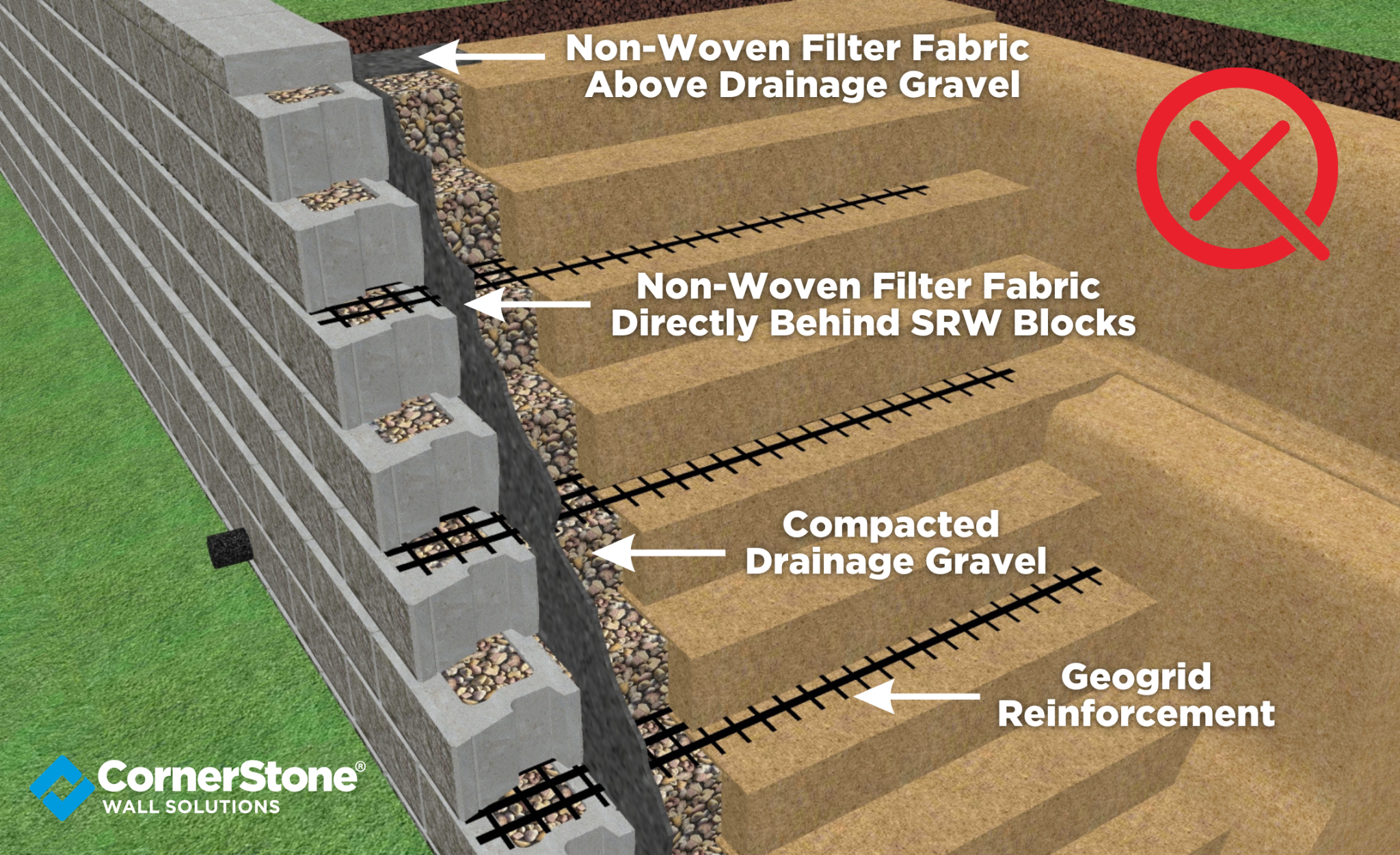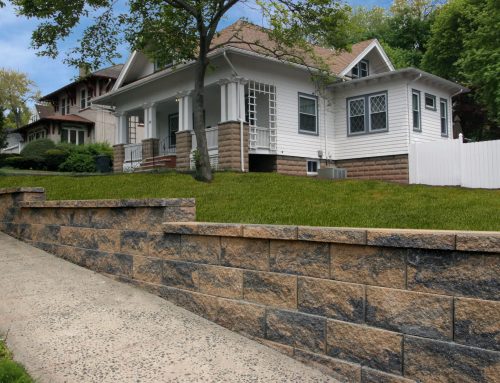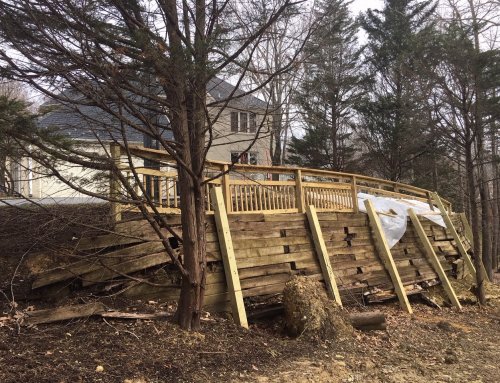Purpose of Filter Fabric and Retaining Wall Drainage Stone
Let’s begin with the basics of how drainage stone and filter fabric can benefit segmental retaining walls (SRWs). Being exposed to the outdoor elements, retaining walls must be able to withstand water – their top threat – whether it be in the form of spring snowmelts, rain or runoff. By controlling and swiftly removing water from behind its blocks, retaining walls tend to perform better and last longer.
Drainage gravel plays a pivotal role in SRWs to help remove water from causing issues behind the wall. For retaining wall systems like CornerStone 100, drainage stone also fills the block’s hollow cores to increase the block’s mass and enhance vertical drainage channels, giving it superior connection strength. Drainage stone is critical to maintaining a retaining wall’s structural integrity.
While drainage gravel and perforated drainpipes excel at removing water, particles and debris that water carries can cause problems behind the blocks. Filter fabric, also known as a geotextile, functions as a permeable filter to prevent soils, sediments and nutrients from migrating into the drainage gravel. This ensures water can flow freely to a safe outlet. Without filter fabric, that debris can build up, clog and obstruct key drainage channels.
Recommended Drainage Gravel and Filter Fabric for Retaining Walls
When it comes to drainage rock, use an angular aggregate that’s free of fines. For CornerStone 100 retaining walls, #57 or ¾” (20mm) clean crush drainage gravel is recommended. Working with gravity, this gravel offers a linear vertical channel for water to pass through seamlessly.
The crush gravel provides an exceptional, high-performance drainage because the angular stones interlock to fill void spaces. In contrast, round river rocks roll off each other, which is not ideal for retaining wall stability. Instead, angular crush clean gravel is key for residential, commercial and water retaining wall applications.
There are many types of filter fabrics to choose from but the design of some stand out above the rest when it comes to filter fabric for SRW drainage stone. Our CornerStone experts suggest non-woven 6oz filter fabric for maximum permeability and protection to endure the challenges water present. Woven geotextile materials are less permeable, typically better suited for reinforcement applications than drainage.
Where Is Filter Fabric Necessary for Retaining Walls?
Every retaining wall project has different site conditions to contend with that can effect whether or not to use filter fabric. That said, here are a few golden rules you can follow when installing retaining walls:
- Drainage stone should always be covered with filter fabric at the top of the wall
- Do not place filter fabric directly behind the SRW blocks; this will trap water
The first 3D diagram above (photo on the left) shows the correct placement of filter fabric behind a retaining wall’s drainage gravel. The incorrect, unsafe placement of filter fabric directly behind the SRW blocks is shown in the second 3D diagram (photo on the right). The placement of filter fabric for SRW drainage stone is critical to the proper installation of retaining walls.
Covering the top of drainage gravel with filter fabric is essential to separate and prevent organic materials like planting soils, grass and other particles seeping in from atop the wall. For best results, lay the fabric atop the drainage gravel and create a short lip with the fabric up the back of the top SRW block or cap unit. The fabric should also extend a minimum of 6 inches (15 cm) behind the drainage stone. This barrier will keep drainage channels clear and prevent migration of topsoil from the wall’s surface.
Laying filter fabric along the height of the wall behind the blocks to separate it from the gravel is not one of its intended purposes. Drainage gravel backfill is meant to surround and add weight to hollow core SRW blocks, securing them in place. Adding filter fabric between the blocks and drainage stone compromises the wall’s vital compaction, leaving dangerous spaces that make it prone to movement from settling and erosion.
Determining When to Use Filter Fabric Behind Drainage Stone
Now that we’ve discussed when to use filter fabric above and in front of the drainage gravel, let’s explore behind it. The truth is whether or not to wrap drainage gravel in filter fabric is determined by whether there is coarse grain material or fine grain material behind the gravel.
Granular backfill materials behind the drainage gravel, sand or soils that have grit to them, generally require filter fabric to separate them from the gravel. The fabric prevents these coarse-grained materials from infiltrating drainage channels, including the gravel and drainpipes. In turn, this allows water a safe, streamlined path to outlets below and away from the retaining wall.
With fine-grained backfill like clays or silty soils behind the drainage gravel, filter fabric may not be required. These types of backfill can clog and obstruct the permeable filter fabric, increasing hydrostatic pressure and the chances of wall failure. When fine-grained backfills are situated behind the drainage gravel, compaction is crucial to ensure water cannot cause trouble by saturating the backfill materials.
Can filter fabric prevent clay colors staining retaining wall facing?
Unfortunately filter fabric cannot stop clays from staining the face of retaining walls, but there are other measures that can prevent this from happening. Adding a sand layer between the clay and drainage stone will help filter their fines and stop them from tarnishing the face of the wall. A layer of sand would alter the backfill composition, therefore filter fabric would be needed between the sand and drainage gravel.
Check out the free online step-by-step CornerStone 100 How-To Guides for more retaining wall building tips or watch the CornerStone 100 Installation Videos here. Have more questions? Contact our CornerStone team or find your nearest CornerStone block supplier for further insight and information.
Photos: York Building Products






















